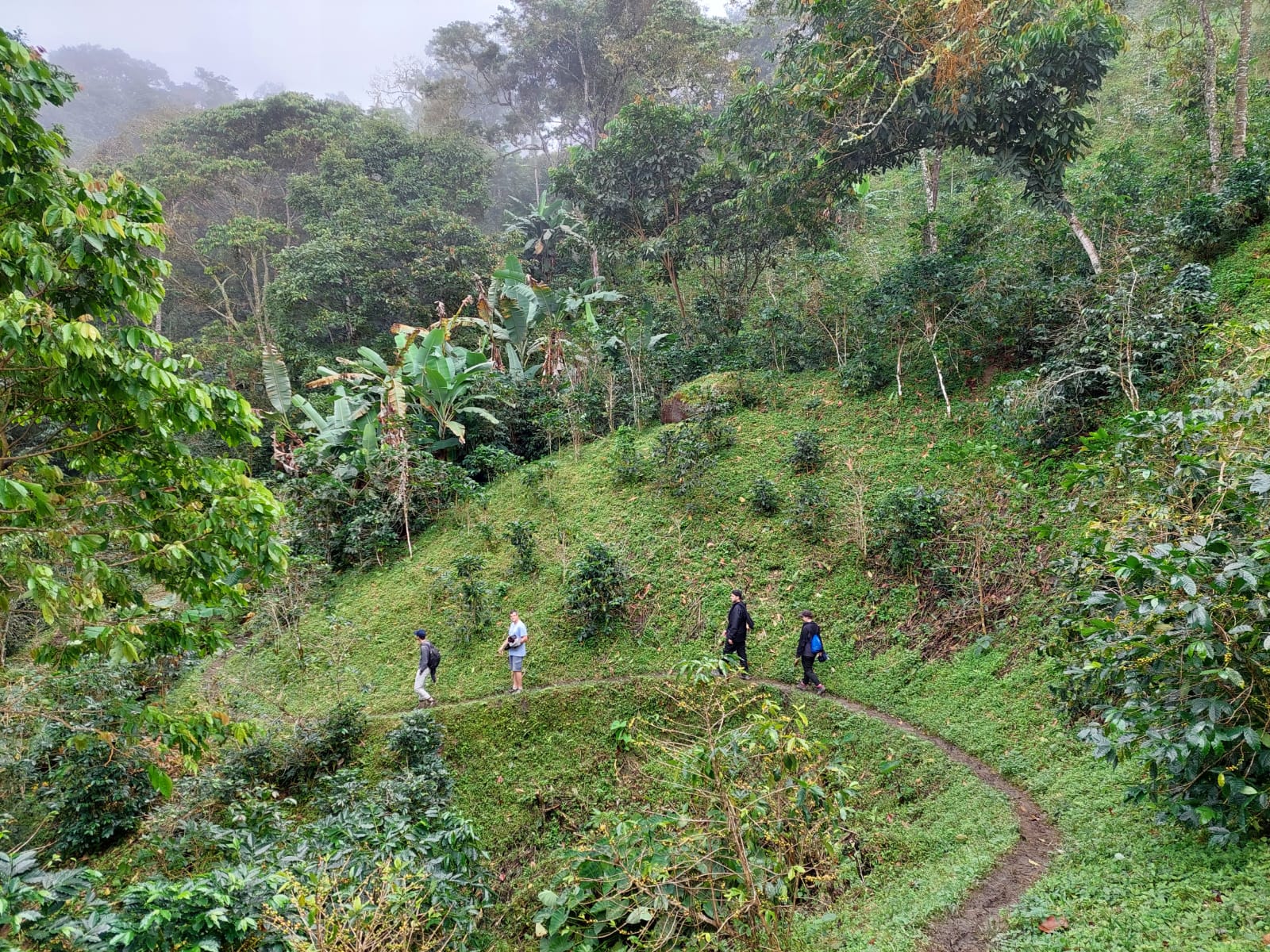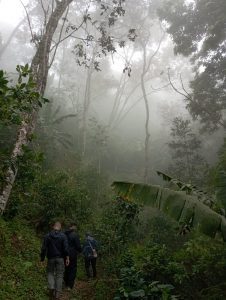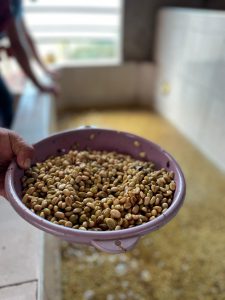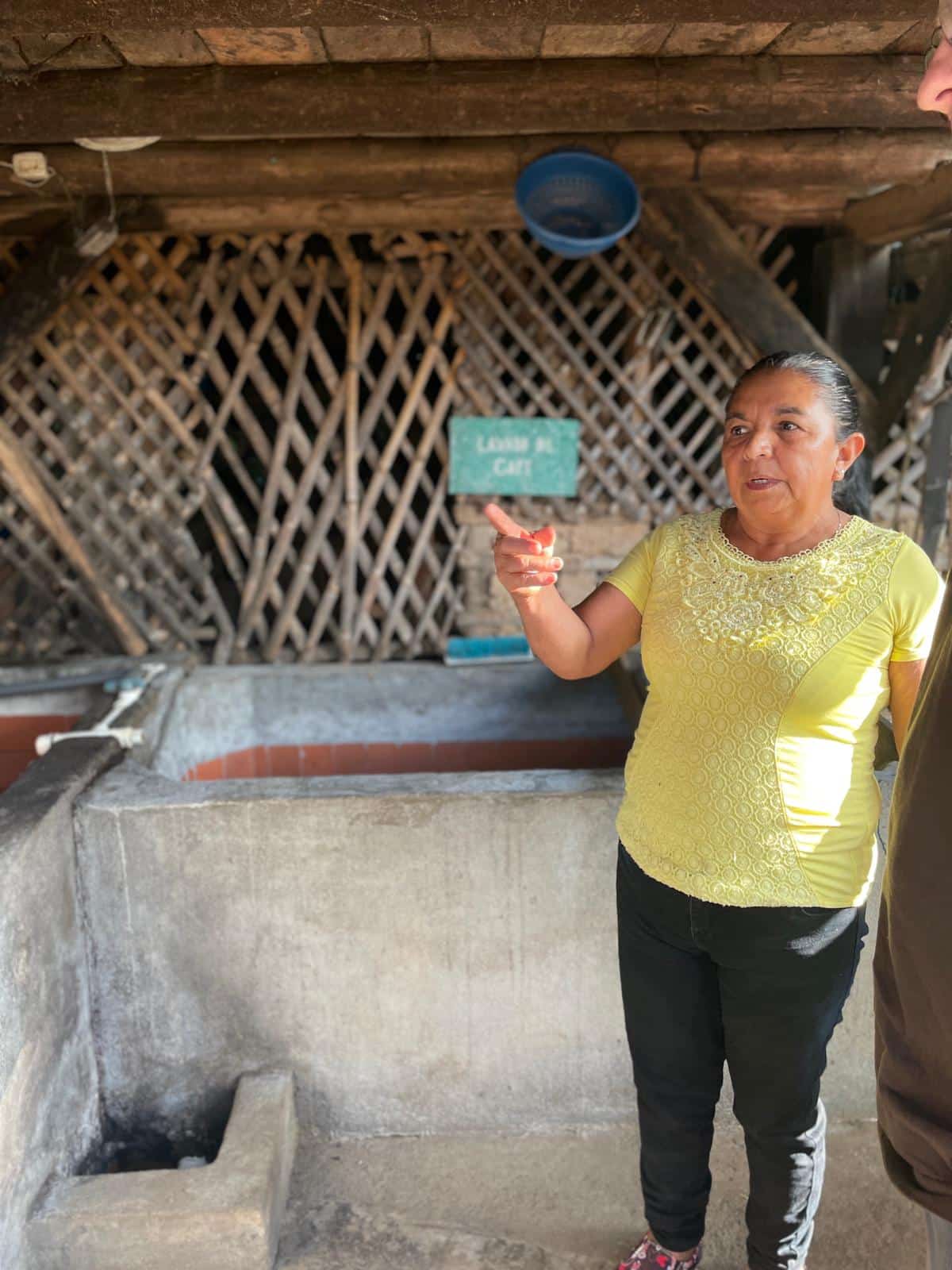NOVEMBER 2022 – FIELDTRIP COLOMBIA:
Insights, Foresights & Lessons Learned
Insights, Foresights & Lessons Learned

In November, we travelled through Colombia with our Colombian partner InConexus and some of our fellow roasters.
This time, our trip was dedicated to visiting the regions where we mostly source our coffee; Sierra Nevada for our organic crops, Sol Naciente and Huila for the top micro-lots.
It was the perfect timing to see the beginning of the harvest in Sierra, and the ideal moment to already cup the new crop in Huila.
Meeting the farmers who grow the coffees we import, is not only one of our most favourite parts of our job, but it is also one of the cornerstones of the Cuprima philosophy.
Another topic we feel strongly about is ‘sharing our knowledge and expertise’, so please hereby find our insights, foresights and lessons learned:
We did not visit ‘one Colombia’, we discovered a multitude of Colombia
The first thing we noticed is that there is not ‘one Colombia’, but there are ‘multiple Colombia’s’.
We may know the difference in cup profile between Tolima, Sierra Nevada, Antioquia or Huila. These coffee regions have their own specific characteristics and ecosystem; the soil, altitude, latitude are all different and affect the cup profile. But within the same region, the same differences still prevail. Each ecosystem (macrosystem) is made up of different so called ecotopes (microsystems). Also when it comes to fermentation, we often refer to the type of fermentation, time, temperature to predict the cup profile. But each fermentation is linked to a specific environment, the environment is driving the development of micro-organism during the fermentation process. This makes it very difficult to standardize fermentation processes and makes us understand that the very first thing to do when evaluating a coffee, is to understand its environment.


The recipe for good coffee is divers
Today, Huila is one of the regions with the largest production in Colombia. The most famous “Eje Cafetero” started more as a tourist destination for backpackers who wanted to visit a coffee plantation, than as a strategic export region for Colombian coffee. How to explain this shift? The ecosystems and ecotopes described above certainly contribute to this, but local infrastructure and local people are also important parts of this story.
The roads in Huila are better, making it easier to transport coffee from farms to cooperatives, drying mills and ports. The mentality/point of view of the farmers also plays a role. While farmers in some areas strive for a high yield (e.g. by increasing the number of trees per hectare), farmers in Huila (we cannot generalize either) are more quality conscious and make sure that the trees have enough space to produce well. These smart decisions also make a difference. Terroir, infrastructure, culture, mentality; everything influences the quality of the cup.


Shared Responsability
One might think that production stimulates consumption, but on the contrary, farmers/producers pay close attention to the evolution of consumption in order to position their coffee where the market pays higher prices. We see that more and more producers are starting to implement new fermentation processes such as anaerobic lactic acid/alcoholic fermentation to meet the new needs of end users. But these new processes require new equipment and especially knowledge and experience to achieve good results in the cup. This is long-term work and a real investment for both producers and exporters. As a buyer, we must remember that our purchases have a real impact on producers’ decision to grow and process coffee.
Continuous feedback between producer and consumers helps to better understand needs and to focus on suitable agriculture that will help farmers position their coffee in the market in a long-term perspective.
Is it sustainable for a producer to plant Gesha on all his plantations? Maybe not, but the producer definitely needs guidance to ensure that the changes they want to make, will work for them and provide a return on their investment. It is part of the role of the exporter to guide the producers. At InConexus, several agronomists travel to coffee plantations throughout the country to guide and monitor the farmers throughout this. And it is also our role as an importer to ensure the continuity of our purchases to support all investments made in the country of origin.


Looking Ahead – the Future of Coffee
We were delighted to see a new fermentation processes implemented by farmers. At Finca Las Palmas, Huila, they start with alcoholic and lactic acid fermentation. In both techniques, bacteria or yeasts are added to the anaerobic tanks. There is discussion in the specialized industry about these new processes. The main consideration concerns information to the end consumer, and the deviation from “natural” fermentation.
Apart from this debate, there is something very interesting for growers, which is the duplicability of the cup profile over time. Indeed, once you’re able to control your fermentation to achieve an accurate cup profile, it means you can play around with it too. In a context of climate change and concerns about coffee production, controlling the fermentation process may seem like a new tool to maintain consistency on the cup profile and therefore the price of coffee.
Perhaps this can help us see behind these new fermentation processes not just a funky cup profile, but a new, sustainable way of producing coffee in a challenging coffee future.